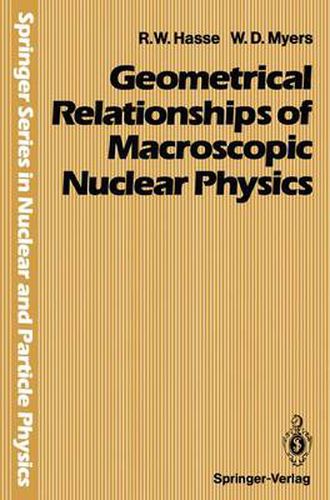Readings Newsletter
Become a Readings Member to make your shopping experience even easier.
Sign in or sign up for free!
You’re not far away from qualifying for FREE standard shipping within Australia
You’ve qualified for FREE standard shipping within Australia
The cart is loading…






This title is printed to order. This book may have been self-published. If so, we cannot guarantee the quality of the content. In the main most books will have gone through the editing process however some may not. We therefore suggest that you be aware of this before ordering this book. If in doubt check either the author or publisher’s details as we are unable to accept any returns unless they are faulty. Please contact us if you have any questions.
The aim of this book is to provide a single reference source for the wealth of geometrical formulae and relationships that have proven useful in the descrip tion of atomic nuclei and nuclear processes. While many of the sections may be useful to students and instructors it is not a text book but rather a reference book for experimentalists and theoreticians working in this field. In addition the authors have avoided critical assessment of the material presented except, of course, by variations in emphasis. The whole field of macroscopic (or Liquid Drop Model) nuclear physics has its origins in such early works as [Weizsacker 35] and [Bohr 39]. It continued to grow because of its success in explaining collective nuclear excitations [Bohr 52] and fission (see the series of papers culminating in [Cohen 62]). These develop ments correspond to the first maximum in the histogram below, showing the distribution by year of the articles cited in our Bibliography. After the Liquid Drop Model had been worked out in some detail the development of the Struti nsky approach Strutinsky 68 gave new life to the field. The growth of interest in heavy-ion reaction studies has also contributed.
$9.00 standard shipping within Australia
FREE standard shipping within Australia for orders over $100.00
Express & International shipping calculated at checkout
This title is printed to order. This book may have been self-published. If so, we cannot guarantee the quality of the content. In the main most books will have gone through the editing process however some may not. We therefore suggest that you be aware of this before ordering this book. If in doubt check either the author or publisher’s details as we are unable to accept any returns unless they are faulty. Please contact us if you have any questions.
The aim of this book is to provide a single reference source for the wealth of geometrical formulae and relationships that have proven useful in the descrip tion of atomic nuclei and nuclear processes. While many of the sections may be useful to students and instructors it is not a text book but rather a reference book for experimentalists and theoreticians working in this field. In addition the authors have avoided critical assessment of the material presented except, of course, by variations in emphasis. The whole field of macroscopic (or Liquid Drop Model) nuclear physics has its origins in such early works as [Weizsacker 35] and [Bohr 39]. It continued to grow because of its success in explaining collective nuclear excitations [Bohr 52] and fission (see the series of papers culminating in [Cohen 62]). These develop ments correspond to the first maximum in the histogram below, showing the distribution by year of the articles cited in our Bibliography. After the Liquid Drop Model had been worked out in some detail the development of the Struti nsky approach Strutinsky 68 gave new life to the field. The growth of interest in heavy-ion reaction studies has also contributed.